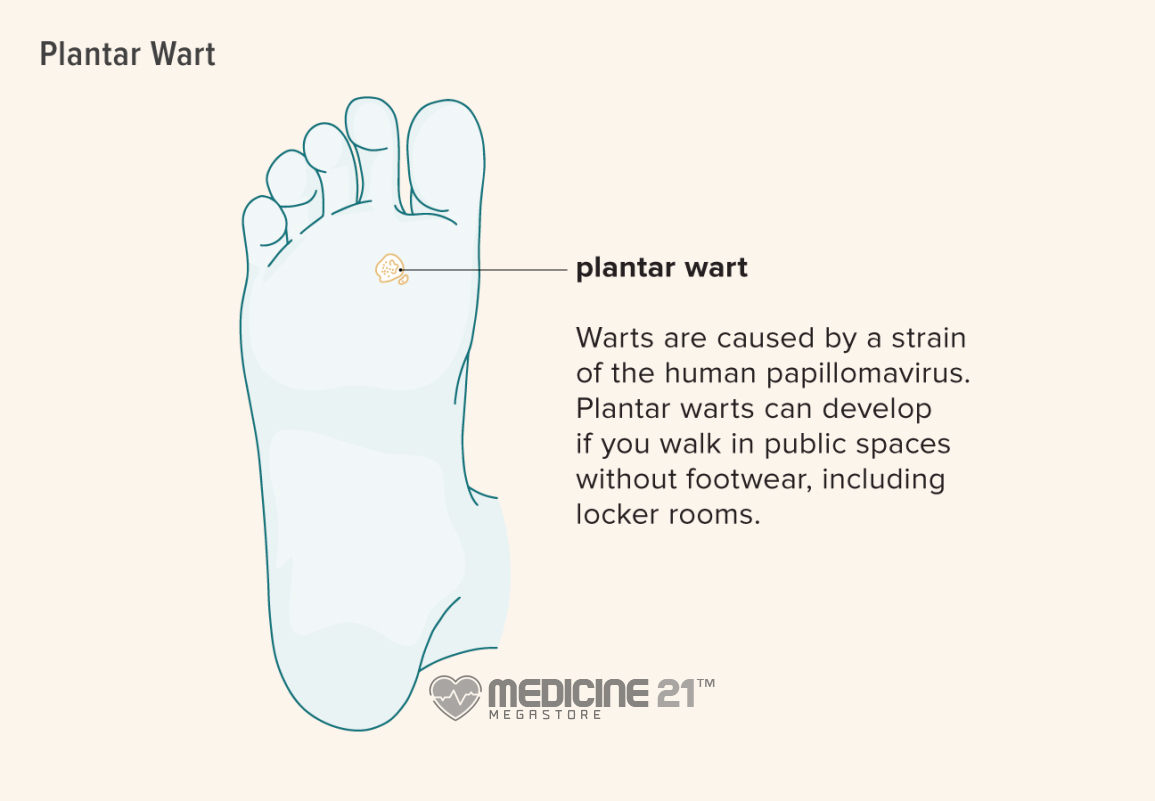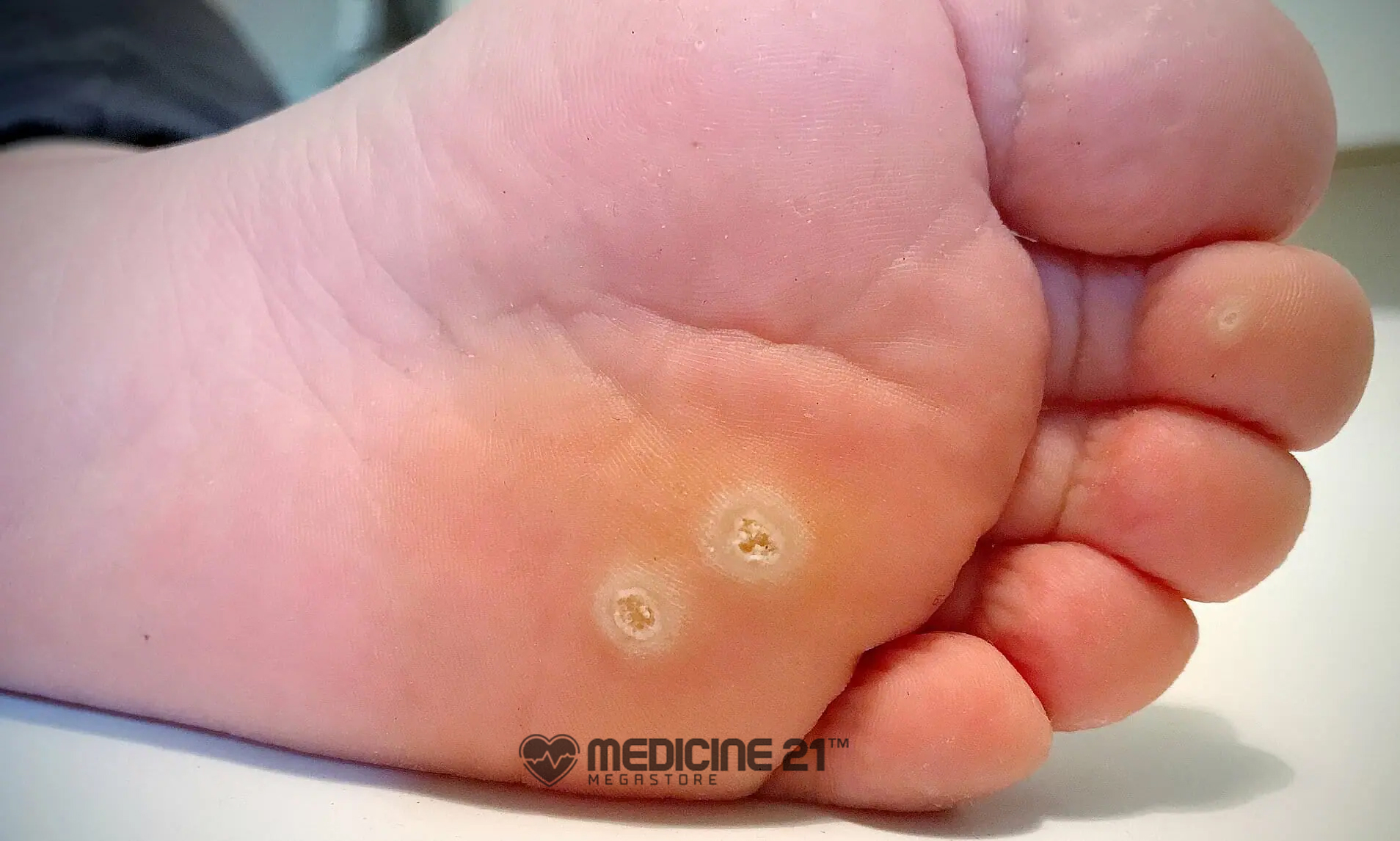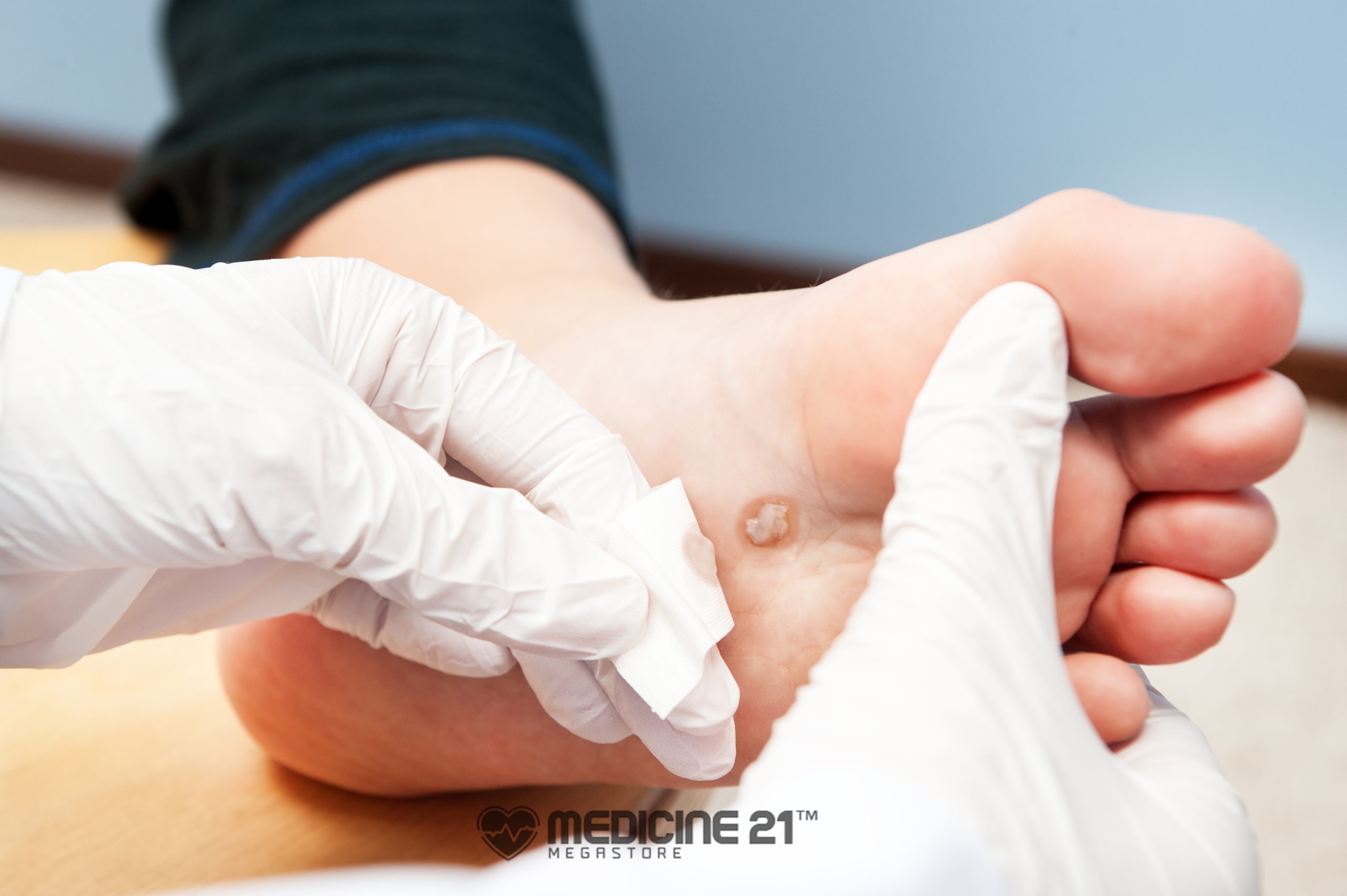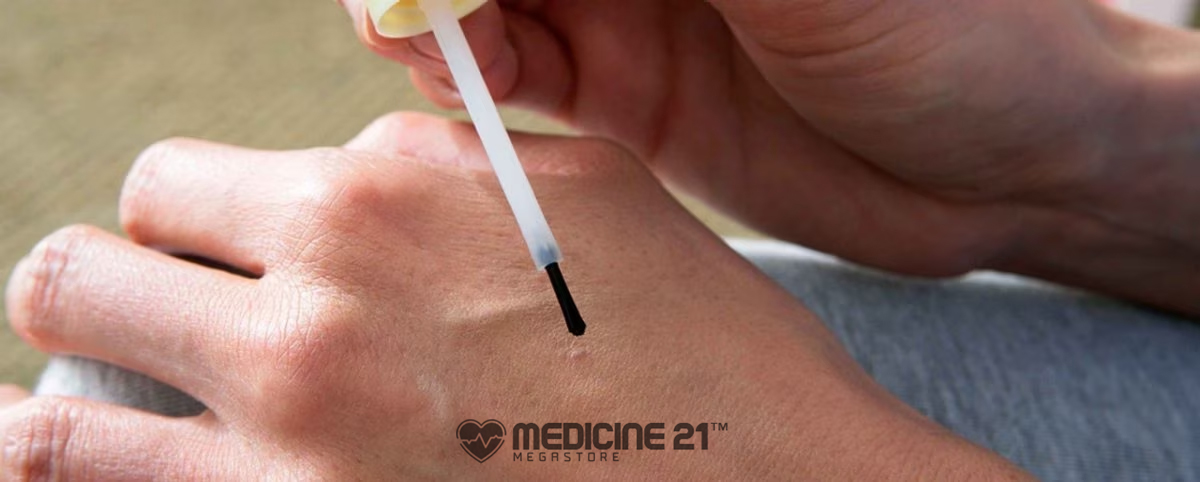
What are warts?
Warts are small, harmless lumps of skin caused by a virus known as the human papillomavirus (HPV). A wart will usually have a flesh coloured appearance and the skin forming the wart will be rough. Warts are common in school-aged children but can happen at any age.
What are the symptoms of warts?
The appearance of a wart depends on its type. There are several different types of warts:
- Common warts (verruca vulgaris) — these are small, raised areas of skin, usually round, with a rough surface of skin often looking like the top of a cauliflower. These warts often appear on the hands, elbows and knees.
- Plane or flat warts — these are flat warts that are usually yellow in colour and appear on the hands and face. They are most common in children and can often spread and group together.
- Plantar warts — these are warts that appear on the feet, usually on the sole, heel or toes. The weight of the body causes the wart to be pushed into the skin so a plantar wart will usually not be raised like other warts and may even cause some discomfort when walking. You may notice a white area of skin with a tiny black dot or dots in the centre.
- Filiform warts — these are long, thin warts that usually appear on the eyelids, armpits or neck.
- Mosaic warts — these grow in clusters and are most common on the hands and feet.
- Subungual or periungual warts — these are warts that form under or around the cuticle.
- Mucosal warts — these can appear on the lips, inside the cheeks and nose, the airway and in genital areas.

What causes warts?
You can get the HPV virus from direct contact with the skin from another person who has the virus or indirectly through contaminated surfaces such as swimming pools or gymnasiums. HPV infects the cells in the outer layer of the skin, causing them to grow and form a wart. It can take up to a year for the wart to appear for the first time.
Genital warts are caused by a different family type of HPV. These are sexually transmitted and can cause cervical and vulval cancer. Ordinary skin warts do not cause cancer.
When should I see my doctor
Most warts will go away without treatment in time. In children, without treatment, half of all warts disappear within 6 months and almost all (9 in 10) will go away within 2 years. It can take longer in adults.
It is a good idea to show the wart to your doctor if:
- the wart is bothering you or painrful
- you have warts of the face, feet or genitals
- the wart looks infected (red, swollen and warm)
- you have multiple warts or the warts are spreading
- you have reduced immunity
- you are pregnant or planning a pregnancy

How are warts treated?
Many people choose not to treat warts because treatment can be uncomfortable.
There are several ways to treat warts, including those you can do yourself and treatments done by a doctor. If you choose to treat a wart, it’s important to stick with the treatment until the wart is gone.
If you are pregnant or planning pregnancy, you may need to avoid certain treatments, so talk to doctor before starting treatment.

Treatments at home
Cover the wart
Covering the wart with strong, waterproof tape may help it to clear up. It can also stop the wart from spreading.
Liquid or gel
A common method of treating warts involves applying a liquid or gel containing salicylic acid or lactic acid (wart paint) to the wart.
You can buy wart liquid or gel at your local pharmacy and put them on at home. Your doctor can give you a prescription for stronger solutions.
To use wart gels or liquids, you need to prepare the wart first:
- soak the area around the wart in warm water for 5 to 10 minutes (having a shower makes this easy)
- rub the wart with a nail file, emery board, pumice stone or even sandpaper
- put the gel or liquid on the wart, making sure you avoid the healthy skin around it
- let the gel or liquid dry and cover the area with sticking plaster
You usually need to use wart liquid or gel every day, and it can take many weeks to work.
Talk to your pharmacist about which wart treatment is suitable for you. Always follow the directions on the packaging for the use of wart treatments, and ask your pharmacist if you have any questions.
Never use wart paints on the face.
Doctor treatment options
Freezing
Freezing a wart (known as cryotherapy) needs to be carried out by a healthcare professional. It works by exposing the wart to a very cold liquid, such as liquid nitrogen or sprays. This freezes the wart and destroys its skin cells. Salicylic acid can also be used to destroy the wart.
Burning and laser
Burning, surgical removal and laser wart removal treatments are done under local anaesthetic. These treatments are done less commonly because they can leave scars.
Immunotherapy
This involves treatments that encourage the immune system to recognise and destroy the skin cells that are infected with the wart virus. This treatment takes time and can be very itchy.
Can warts be prevented?
There are steps you can take to prevent warts from spreading.
- If you have a plantar (on the bottom of the feet) wart, you need to change your socks daily.
- Do not share towels with another person. If you have a plantar wart you should avoid sharing any footwear including socks.
- If you have a plantar wart make sure you clean out the bottom of your shower or bath after use.
- Wash your hands if they come into direct contact with your wart, such as when you apply any treatments.
- Never pick, scratch or bite a wart.
- Do not share any medicines or remedies used to treat your wart. This includes emery boards and pumice stones.
- If you have a plantar wart and go swimming you should cover it up and wear thongs in communal areas. Do not go barefoot in public areas.

